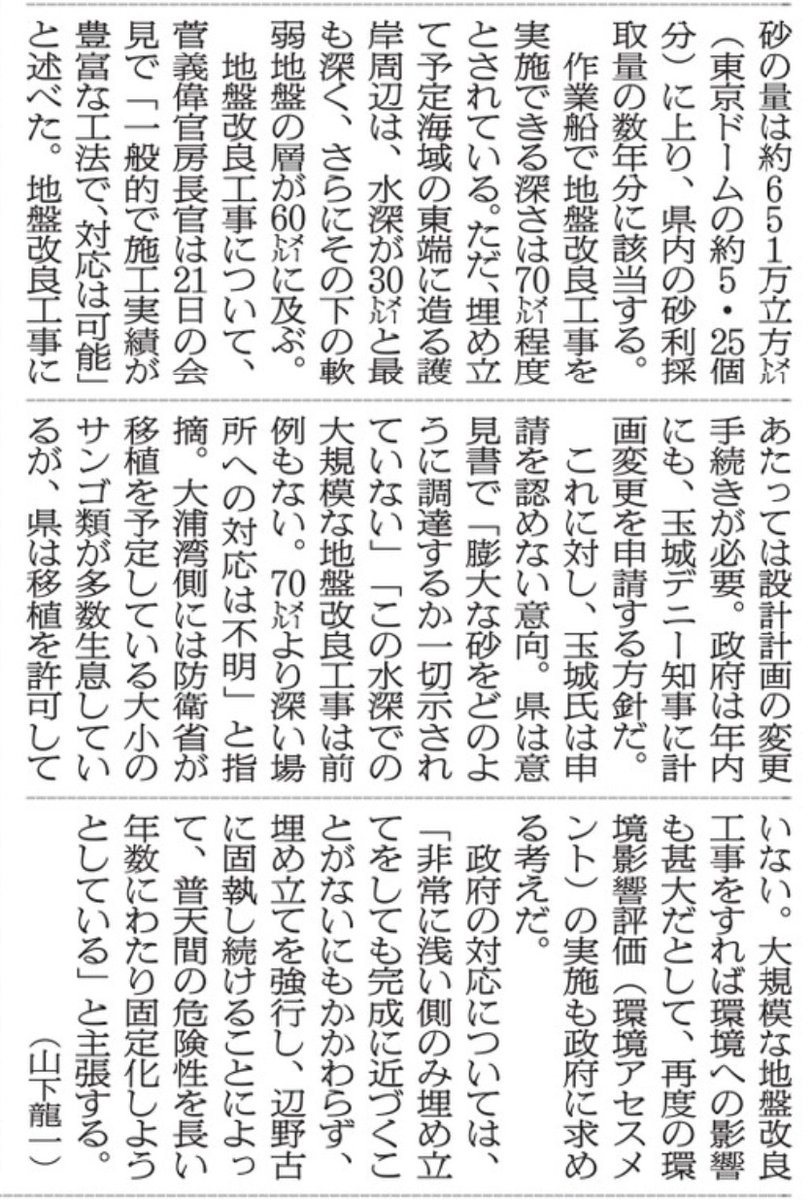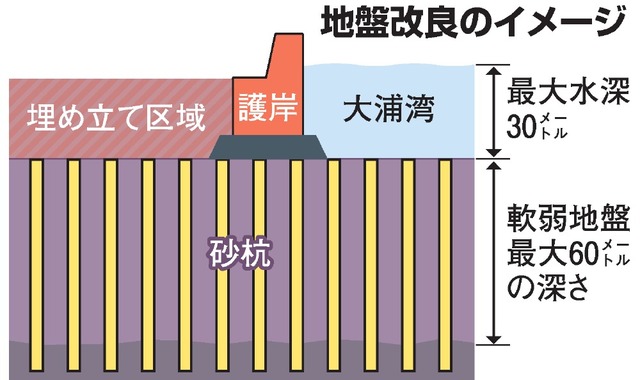報道の側が「片棒を担ぎ始めた」自壊の構図!
https://85280384.at.webry.info/201902/article_210.html
| 2019/02/22 00:10 半歩前へ ▼報道の側が「片棒を担ぎ始めた」自壊の構図! 共同通信が、官邸の取材妨害に絡む記事を配信した。数時間後にその記事の核心部分の「8行」を削除した。記事に加盟社の一部からクレームがついたというが、正当な理由とはいいがたい。 <時代の正体>質問制限 削られた記事「8行」 忖度による自壊の構図、と題して神奈川新聞が「報道の危機」について警鐘を鳴らした。 正鵠を射た記事である。極めて重要な内容だ。一人でも多くの読者に読んでもらいたい。 以下に転載する。 ************************ 【時代の正体取材班=田崎 基】18日夜、わずかな異変が起きていた。新聞各紙の締め切り時間がじわじわと迫る午後9時57分、共同通信が加盟各紙に配信した記事の一部を削除すると通知してきた。 「官邸要請、質問制限狙いか 『知る権利狭める』抗議」と題する大型サイド。 官房長官記者会見での東京新聞記者による質問について、首相官邸が「事実誤認」だと断定し質問制限とも取れる要請文を内閣記者会に出したことについて、問題点を指摘する記事だった。 要請文が出された経緯や、その後に報道関連団体から出された抗議声明、識者の見解などを紹介する記事の終盤に差し掛かる段落のこの記述が削除された。 〈メディア側はどう受け止めたのか。官邸記者クラブのある全国紙記者は「望月さん(東京新聞記者)が知る権利を行使すれば、クラブ側の知る権利が阻害される。官邸側が機嫌を損ね、取材に応じる機会が減っている」と困惑する〉 午後4時13分に一度配信された記事は、5時間44分後に、この8行が削除されて配信され直した。 共同通信による「編注」(編集注意)には削除理由としてこう記されていた。 〈全国紙記者の発言が官邸記者クラブの意見を代表していると誤読されないための削除です〉 +++++++++++++++ ●癒着 共同通信は、本紙を含め全国の地方紙や全国紙、海外メディアなどに記事を配信する国内最大級のニュース通信社で、世界41都市に支社総支局を置く。NHKを含め加盟新聞社は56、契約民間放送局は110に上る。 24時間体制で速報を配信し続けているため、記事の配信後に内容が随時差し替わっていくケースは少なくない。分量が増えたり、無駄な記述が短縮されたり、事実関係について随時削除、追加されたりすることもある。 だが今回は違った。事実とは無関係の、それも記事の核心部を無きものにしたと、私は思う。 顛末を知る共同通信の関係者によると、記事の配信後、内容を見た加盟社から電話が入り、記者クラブと官邸が癒着していると思われる恐れがあると指摘を受けた。 子細な経緯や指摘を入れた加盟社の思惑は知り得ないが、共同通信は8行を削って配信し直した。 削除について共同通信は「編集活動のプロセスに関する詳細については回答を控えさせていただきます」としている。 +++++++++++++++ ●倒錯 「全国紙記者」による論理を私も耳にしたことがある。東京新聞の記者が「知る権利」を行使すると、クラブ側の「知る権利」が阻害される、という理屈だ。 記者会見という限られた時間の中で、特定の記者が質問を重ねると、別の記者の質問時間が奪われる、という趣旨だが、この際通用しない。 なぜなら「官房長官会見」の主催は官邸記者クラブ側であり、本来会見を主導すべきは記者クラブ側であって、質問は可能な限りなされるべきであるし、官房長官も時間の許す限り応答することが求められる。 さらに、誰かが権利を行使しようとしたとき、それによって自分の権利が毀損(されるというのは、倒錯の思考であって根本的に間違っている。 記者の「質問する権利」を守るのは他ならぬ記者たちであって、それは質問し続けることで守っていく必要がある。 権利はつまり「誰かが行使しようとする」ことによって、自らの権利もまた同時に守られていくという関係にある。 削られたコメントには「官邸側が機嫌を損ね、取材に応じる機会が減っている」ともある。記者クラブが官邸におもねり、機嫌を取ることで「取材させてもらっている構図」をうかがわせる極めて重要な発言だ。 一方で、別の全国紙の政治部記者は削除されたコメントについて、「そうした考えの記者の気持ちも分かる。だがそれは問題の本質を見誤っている」と指摘する。 「今回の質問制限は、日々の取材のしやすさなどという低次の問題ではない。報道が権力とどう向き合うのかという高次の問題。これが本質であって『権力による質問制限は到底許されない』という点で、記者クラブはぶれてはならない」と話す。 ++++++++++++ ●腐心 共同通信は削除した理由を「官邸記者クラブの意見を代表していると誤読されないため」としている。ただ、コメントのような考えを持つ記者が記者クラブにいることも事実だ。 特に今回の記事は、権力と報道という緊張関係について指摘する内容であり、かつその核心部が削られた。 誤読を避けるためには、活字を削除するのではなく、論理の再構成や書きぶりの修正、再取材による補強によってなされるべきであった。 東京新聞は20日、朝刊1ページを全て使い「官邸側の本紙記者質問制限と申し入れ」と題して「検証と見解」を発表した。 質問制限の異常性が明らかにされている。 東京新聞記者による質問の際、官邸報道室の上村秀紀室長が「質問は簡潔に」「質問に移ってください」と数秒置きにマイクを通じて言い、わずか1分半の質問時間の中で計7回も遮ったケースもあったという。 この妨害は2017年秋から始まり常態化しているという。こうした様子は官邸のホームページで公開されている動画でも異常性を確認できる。 ++++++++++++ ●職責 会見の場で質問を遮る妨害、さらには記者クラブに対し要請文をもってかける圧力。権力者によってこれほどあからさまに私たちの報道の自由が抑圧されたことが戦後あっただろうか。 次なる闇は、その片棒を報道の側が担ぎ始めるという忖度による自壊の構図だ。その象徴は削られた8行に込められていた。 圧倒的多数を擁する権力者の振る舞いによって、この国の底が抜けそうになっていると感じる。 表現の自由を弾圧し、批判をよそに次々と法案を強行採決する。閣僚が不祥事の責任を取らず、まともな説明すらしない。 こうした政治の惨状をしかし私たちは初めて経験するわけではない。 先の大戦、到底勝ち目のない戦争へと突き進んだとき、国家の底は抜け、破滅の危機を認識したときには既にその暴走を誰も止めることはできなかった。 自由と権利を持ちこたえさせることができるのは、その行使と、健全な民主主義と、それを支える知る権利の他にない。報道はその一端を担っているという職責を忘れてはならない。
|
























 題名には必ず「阿修羅さんへ」と記述してください。
題名には必ず「阿修羅さんへ」と記述してください。